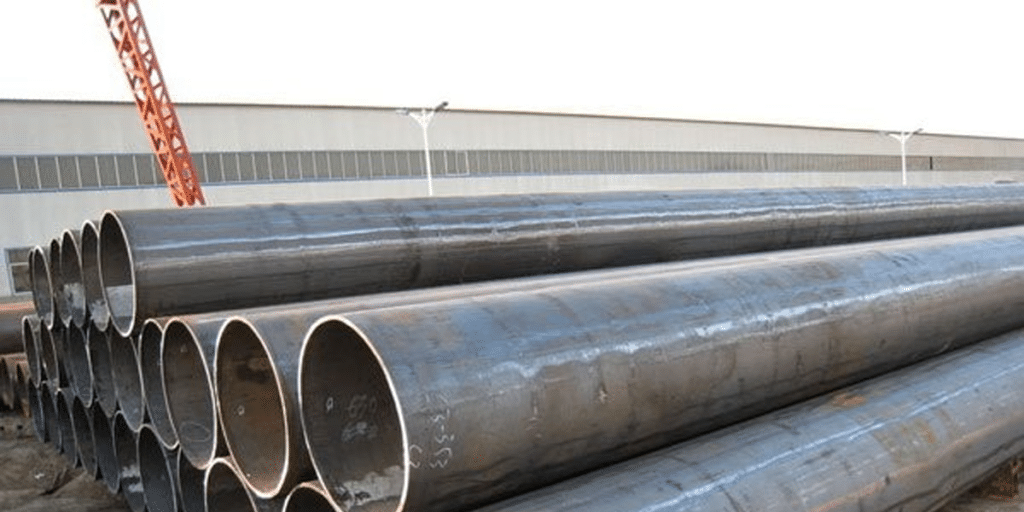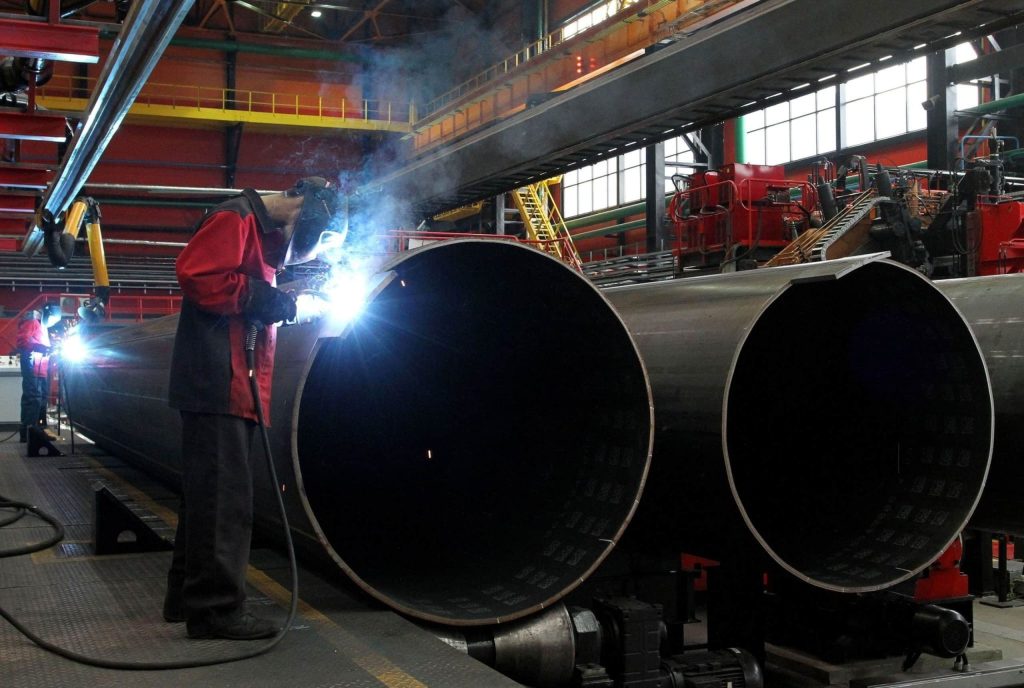- 1. Overview of ASTM A53 Grade B
- 2. Mechanical Property Standards for ASTM A53 Grade B
- 3. Testing and Verification Process for Mechanical Properties
- 4. Key Factors Influencing Mechanical Properties
- 5. Comparative Analysis with Other Standards
- 6. LONGMA’s Quality Assurance and In-House Testing Advantages
- 7. Conclusion: Built for Reliability and Trust
In the field of carbon steel pipes, ASTM A53 Grade B stands as one of the most common and widely used standards. Whether for oil and gas transmission, structural support, or mechanical manufacturing, understanding its mechanical properties—especially tensile strength, yield strength, and elongation—is crucial for procurement professionals and design engineers alike.
Based on the ASTM A53/A53M standard, this article provides an in-depth analysis of the core performance indicators of ASTM A53 Grade B pipes and demonstrates how LONGMA’s in-house laboratory ensures the qualified quality of every steel pipe through rigorous testing.
Overview of ASTM A53 Grade B
ASTM A53 Grade B (commonly abbreviated as ASTM A53 B or ASTM A53 Gr B) is a general-purpose carbon steel pipe standard applicable to welded, galvanized, and seamless pipe production. According to the standard, A53 pipes are categorized into three manufacturing types:
- Type F: Furnace-butt-welded pipes
- Type E: Electric-Resistance-Welded (ERW) pipes
- Type S: Seamless pipes
In engineering practice, ASTM A53 Type E Grade B and ASTM A53 Type S Grade B are the two most common categories. The former is widely used in construction and water supply/drainage systems, while the latter is commonly employed in high-pressure fluid transmission pipelines.
Mechanical Property Standards for ASTM A53 Grade B
Per the ASTM A53/A53M-20 standard, the typical mechanical properties of Grade B pipes are outlined in the table below:
| Item | Unit | ASTM A53 Grade B Requirement |
| Tensile Strength | MPa (ksi) | ≥ 415 MPa (60 ksi) |
| Yield Strength | MPa (ksi) | ≥ 240 MPa (35 ksi) |
| Elongation | % | ≥ 30% (varies by pipe diameter) |
Standard Reference: ASTM A53/A53M – Section 9, “Tensile Requirements”
These three sets of data directly reflect the pipe’s strength and plasticity under stress:
- Tensile strengthrepresents the maximum stress a material can withstand before breaking under tension.
- Yield strengthmeasures the ultimate stress a steel pipe can endure before permanent deformation begins.
- Elongationreflects the material’s toughness and ductility, and serves as a key indicator for evaluating a pipe’s weldability.
Testing and Verification Process for Mechanical Properties
At LONGMA’s in-house laboratory, every batch of ASTM A53 Grade B carbon steel pipes undergoes strict mechanical property testing. The standard testing process is as follows:
- Tensile Test
In accordance with ASTM A370 requirements, standardized specimens are tested on a universal testing machine. Key test parameters include:
-
- Load rate and gage length (typically 50 mm or 2 inches);
- The maximum load point corresponds to the tensile strength;
- The yield point is calculated using the 0.2% offset method.
- Flattening and Bending Test
As specified in Section 10 of ASTM A53, this test evaluates weld quality and ductility—particularly for ASTM A53 Gr B ERW pipes.
- Impact and Hardness Test
While ASTM A53 does not mandate impact testing, to meet the needs of specific projects (e.g., low-temperature pipelines), LONGMA’s laboratory can provide additional Charpy V-notch impact tests and Brinell hardness tests.
These testing procedures not only ensure compliance with standards but also uphold the trust of our customers.
Key Factors Influencing Mechanical Properties
- Chemical Composition Control
The typical chemical composition of ASTM A53 Grade B (by mass percentage) is shown below:
| Element | Content (%) |
| Carbon (C) | ≤ 0.30 |
| Manganese (Mn) | ≤ 1.20 |
| Phosphorus (P) | ≤ 0.05 |
| Sulfur (S) | ≤ 0.045 |
| Trace elements (Cu, Ni, Cr, etc.) | ≤ 0.40 (total) |
By controlling chemical composition, we balance strength and weldability, ensuring ASTM A53 Gr B pipes maintain excellent performance during welding and cold working.
- Heat Treatment and Welding Processes
- ERW (Electric-Resistance-Welded) pipes undergo heat treatment at the weld to relieve stress;
- Seamless pipes control grain structure through hot rolling or cold drawing.
These manufacturing processes ensure the uniformity and reliability of ASTM A53 Grade B pipes, meeting the high-strength and ductility requirements of various industrial pipelines.
Comparative Analysis with Other Standards
During procurement, buyers often confuse ASTM A53 Grade B with ASTM A106 Grade B or API 5L Grade B. The key differences between the three standards are summarized below:
| Standard | Application Scope | Yield Strength (MPa) | Suitable for High Temperatures? |
| ASTM A53 Grade B | General fluids, structural use | ≥ 240 | No |
| ASTM A106 Grade B | High-temperature transmission | ≥ 240 | Yes |
| API 5L Grade B | Oil and gas pipelines | ≥ 245 | Yes |
Therefore, if your project does not involve high temperatures or high pressure, choosing ASTM A53 Gr B ERW pipes offers better cost-effectiveness.
LONGMA’s Quality Assurance and In-House Testing Advantages
As a carbon steel pipe manufacturer with over 20 years of production experience, LONGMA adheres to the quality philosophy of “every steel pipe is traceable.” Our in-house laboratory is equipped with:
- Tensile testing machines, spectral analyzers, and ultrasonic flaw detectors;
- Strict compliance with ASTM A53/A53M and ASTM A370 for mechanical property testing;
- Provision of Mill Test Certificates (MTC)— factory reports that detail tensile strength, yield strength, and elongation results.
Customers may request test reports or third-party certifications at any time to ensure risk-free procurement decisions.
Conclusion: Built for Reliability and Trust
The mechanical properties of ASTM A53 Grade B pipes not only determine their ability to withstand project stresses but also reflect the technical capabilities of the manufacturing enterprise. Choosing LONGMA’s ASTM A53 Gr B carbon steel pipes means selecting a safe pipeline solution that has undergone scientific validation and strict testing.
Whether you need ASTM A53 Gr B Sch 40 pipes, ASTM A53 Type E Grade B welded pipes, or seamless carbon steel pipes that meet international standards, LONGMA can provide you with highly consistent and reliable product solutions.
Contact LONGMA today to obtain the latest quotes and specification sheets (including the ASTM A53 Grade B specification PDF), and ensure your project is solid and reliable from the ground up.



